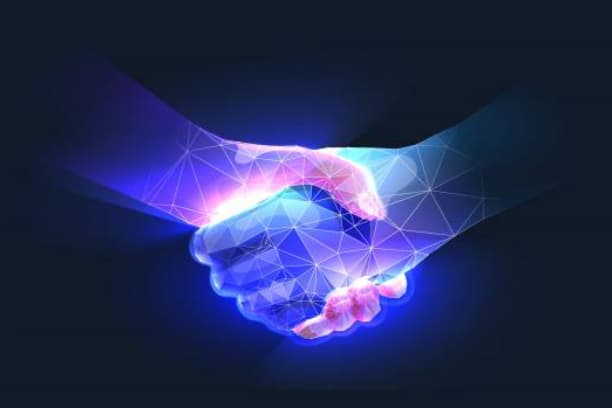Web3 (Decentralized Internet) is a hot topic in the cryptocurrency field in recent years, attracting a lot of attention.The highlights of Web3 are its decentralization, security, and increased user control. Through blockchain technology, Web3 breaks through the limitations of the traditional Internet and redefines data storage and network interaction. This article will analyze the main features of Web3 in depth to help you better understand how this technology is changing our digital world.

Core features of Web3
Web3 has revolutionized the Internet, not just in terms of technology, but also in terms of the structure of the Internet. the core features of Web3 can be summarized as decentralization, data ownership, smart contracts, and the token economy, among other things.
1. Decentralization: breaking the traditional Internet monopoly
Decentralization is one of the core advantages of Web3. In the traditional Web2 Internet, control of data and content was often concentrated in the hands of a few large companies that controlled user data through centralized platforms.Web3 achieves decentralization through blockchain technology, which allows data and applications to be distributed globally instead of relying on a single, centralized server or institution.
Advantages of decentralization include:
- Avoid single point of failure: Web3's decentralized architecture makes the entire network more stable and reliable, and less susceptible to a single server or platform crash.
- User-autonomous data control: Users can directly control their own data to avoid misuse or theft of personal information by third-party platforms.
- Removing intermediaries: Web3 allows users to transact and communicate directly, eliminating the need for intermediaries in the traditional Internet and reducing costs and risks.
2. Data ownership: back to user control
Web3 gives users true ownership of their data through blockchain technology. While in the traditional Web2 model, photos, files and personal information uploaded by users are owned by the platform, in Web3, data is encrypted and stored on the blockchain, and only the user has the authority to unlock and manage this data.
Data ownership characteristics of Web3:
- Remove data thieves: no third party can access the user's data without permission.
- Digital Identity Management: Users can create their own digital identities in Web3 and take full control of their online presence.
- Users choose to share on their own: Users can choose when and how to share their data according to their needs, and can even control the scope of data sharing through smart contracts.
3. Smart contracts: the future of automation and transparency
Smart contracts are an important part of Web3, which is based on blockchain technology and allows two parties to reach an automatically executed agreement without an intermediary. The core of a smart contract is its auto-execution feature, which allows the contract to be automatically executed once the contract conditions are met.
Advantages of Smart Contracts:
- No need to trust intermediaries: through smart contracts, both parties to a transaction no longer need to trust a centralized institution or individual, but rather blockchain technology ensures that the transaction is secure and transparent.
- Automated operations: Smart contracts automate the execution of operations such as transactions, payments and information sharing, reducing the possibility of human intervention and error.
- Transparent and verifiable: all contract execution records can be queried on the blockchain, ensuring the transparency and fairness of the operation.
4. Token economy: innovations in incentives
Token economy is another highlight of Web3. While in Web2, platforms profited from advertising, user traffic and other business models, in Web3, tokens become an important part of digital assets.Web3 incentivizes users to participate in the network through cryptocurrencies and token rewards mechanisms, driving the development of decentralized applications.
Key features of the token economy:
- Reward mechanism: Users can be rewarded with tokens by participating in the governance of the network, content creation or resource provision.
- Decentralized Governance: Many Web3 platforms use a Decentralized Autonomous Organization (DAO) model, where token holders can participate in the platform's decision-making and governance.
- Redistribution of wealth: tokens can be used as a reward for participants, making the distribution of wealth and value more equitable.
The Impact of Web3 on Traditional Industries
Web3 hasn't just changed the way the Internet works, it's also had a profound impact in a variety of industries. Especially in the fields of finance, entertainment, healthcare and education, Web3 technologies offer more possibilities for innovation.
1. Decentralized finance (DeFi): reshaping the financial ecosystem
Decentralized Finance (DeFi) is one of the most compelling applications of Web3. DeFi enables financial services, including lending, trading, and payments, without the need for traditional financial intermediaries through smart contracts and blockchain technology.
DeFi highlights:
- Finance without borders: anyone can access the DeFi platform via blockchain without a bank account or credit check.
- Lower Transaction Costs: The removal of intermediary fees from banks and other financial institutions reduces transaction costs.
- Transparency and security: all transactions are recorded through the blockchain, ensuring transparency and traceability.
2. Web3 in the entertainment industry
Web3 technologies are likewise showing great potential in the entertainment industry. For example, blockchain-based NFTs (non-homogenous tokens) allow creators of artwork, music and video content to interact directly with users, maximizing revenue for creators.
The way Web3 is changing the entertainment industry:
- Direct Creator Economy: Artists and creators receive revenue directly through NFTs, smart contracts, etc., avoiding platform draws.
- Digital Ownership: NFT makes digital artwork, collectibles, etc. unique and gives the holder digital ownership.
- Decentralized Content Platforms: Web3 provides decentralized video and music platforms that allow creators and consumers to interface directly.
Challenges and Prospects for Web3
Despite its many highlights, the popularization of Web3 still faces a number of challenges. Issues such as technical complexity, regulatory uncertainty and user education still need to be overcome through concerted efforts.
1. Technological maturity
Although Web3 has great potential, many Web3 projects are still in the experimental stage and are not yet technically mature enough. Problems such as high transaction costs, network congestion, and user experience are affecting the widespread use of Web3.
2. Regulatory environment
Due to the decentralized nature of Web3 itself, it is difficult for the traditional regulatory framework to adapt to this new Internet form. Therefore, the regulatory policies of governments and regulators for Web3 are still in the exploratory stage, which may affect the speed of development of Web3.
3. User education
Although Web3 is technically very innovative, it may be difficult for ordinary users to understand and use these new technologies. Therefore, improving the public's awareness and ability to use Web3 is the key to promoting this technology.
concluding remarks
The rise of Web3 has brought unprecedented innovation and opportunity to the Internet. Through features such as decentralization, smart contracts, data ownership, and a token economy, Web3 has not only changed the technological landscape, but has also brought about far-reaching effects in industries such as finance and entertainment. While there are still challenges ahead, the future of Web3 is undoubtedly promising as the technology continues to advance. For users, understanding and participating in Web3 is a critical step in embracing the digital world of the future.







